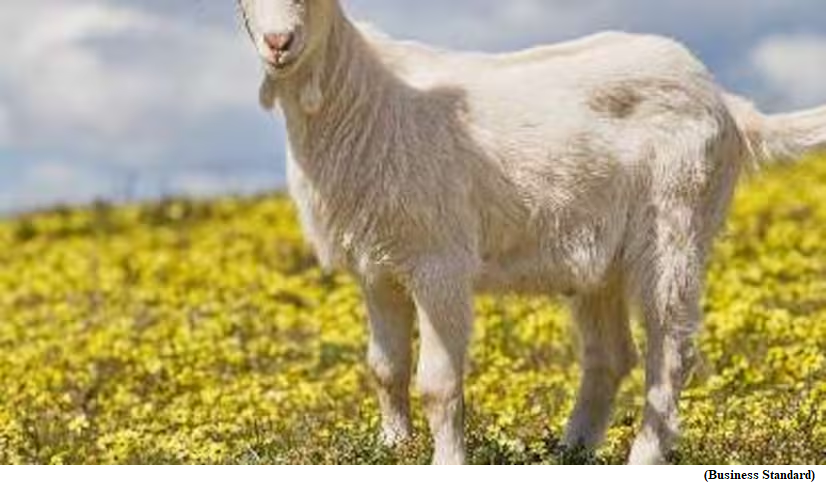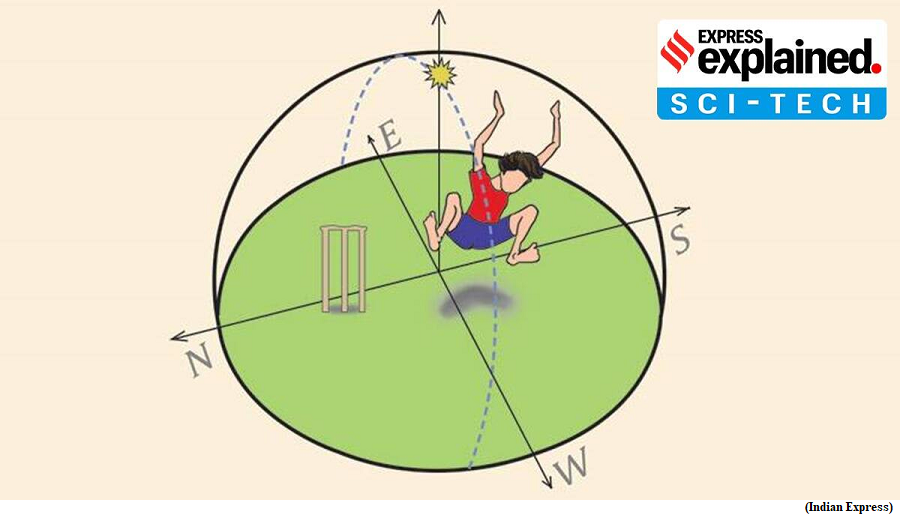SATVIR soldiers on, 6 decades into service (GS Paper 3, Defence)

Why in news?
- When Havildar SATVIR retires after serving the Indian Army’s 7 Kumaon regiment, his namesake will take charge. It has been so for 60 years.
What is SATVIR?
- SATVIRs are goats brought from the higher ranges of the Indo-Tibet border of the Kumaon hills at a young age.
- The regiment’s present Havildar SATVIR is the sixth goat in the lineage.
- SATVIRs retire at the age of around ten years and are accorded a military funeral upon their death and buried with a three-gun salute.
Why name SATVIR?
- The Kumaon region is characterised by steep mountains and deep valleys. These mountains take shove-footed goats to maneuver through the rough terrain. SATVIR is one such goat.
- A team of Army officers was appointed to come up with the name and the formal christening was done on the third raising day of the unit on September 1, 1965.
SATVIR is an acronym for
S – name of the unit Seven Kumaon,
A – Battalion motto: All the way to battle,
T – name of then Commanding Officer Col Thamboo,
V – name of the 2IC Viswanathan,
I – name of the senior most Coy Commander Ishwar Singh Dahiya,
R – name of then Subedar Major Rawat.
- SATVIR started as Lance Naik in the 7 Kumaon in 1965. Later, like other regular soldiers, he was promoted to the rank of Naik in 1968. He was appointed as Havildar in 1971.
Animals in warfare:
- Across the history of warfare, humans have utilised various animals to augment their firepower. The image of a swift cavalry horse comes naturally to the mind when thinking about the presence of animals in a battlefield.
- Dogs are said to be a man's best friend and have served alongside armies for centuries.
- However, departing from the traditional army set-up, modern-day armies have learnt to leverage the skills of a variety of animals. These animals include the decorated mule, Pedongi.
Bengaluru sees Zero Shadow Day
(GS Paper 1, Geography)
Why in news?
- At 12:17 pm on April 25, Bengaluru experienced a ‘Zero Shadow Day’, when vertical objects appear to cast no shadow.
- This was because the sun was at its zenith, and so the shadow was directly under the object.
- Zero Shadow Day occurs on different days in places away from 130° latitude.

What is Zero Shadow Day?
- For every point on Earth between the Tropic of Cancer and the Tropic of Capricorn, there are two Zero Shadow Days a year.
- For Bengaluru, the next one is on August 18. The Zero Shadow Day is restricted to locations between the tropics, and so places north of Ranchi in India are out of it.
- One falls during the Uttarayan when the Sun moves northwards, and the other is during Dakshinayan when the Sun moves southwards.
Why does a Zero Shadow Day happen?
- Uttarayan (movement of the Sun from south to north from winter solstice to summer solstice) and Dakshinayan (back from north to south) happen because Earth’s rotation axis is tilted at an angle of roughly 23.5° to the axis of revolution around the Sun.
- The Sun’s location moves from 23.5°N to 23.5°S of Earth’s equator and back. All places whose latitude equals the angle between the Sun’s location and the equator on that day experience zero shadow day, with the shadow beneath an object at local noon.
PM Modi inaugurates Kochi Water Metro
(GS Paper 3, Infrastructure)
Why in news?
- Recently, the Prime Minister inaugurated the first phase of the Kochi Water Metro, a first of its kind public boat service in India integrated with a metro rail network.

What is the Kochi Water Metro?
- The Kochi Water Metro is a project being implemented by Kochi Metro Rail Corporation Limited (KMRL) with the assistance of a German funding agency, Kreditanstalt für Wiederaufbau.
- It includes boats that are hybrid, battery-powered, air-conditioned and disabled-friendly among other features.
- The water metro will operate on water bodies like any other ferry or traditional boat service, but with modern facilities, enhanced safety and security measures.
How is the water metro linked to the metro rail?
- Kochi Water metro has been envisaged as a feeder service of the Kochi metro rail, which has been operational since 2017.
- While boats have been designed as coaches of Kochi Metro, boat terminals, passenger entry and exit gates, ticket counters and safety measures mirror the features of the metro rail service.
- All jetties feature electronic display boards about boat service.
- Passenger entry and exit to boats, with air-conditioned cabins, are similar to the system in Kochi metros.
Operation:
- The water metro boat service will operate in the backwaters of Kochi, connecting 10 nearby islands with the mainland of Kochi, the commercial hub of Kerala.
- The project is envisaged with 38 jetties, and 78 boats, covering a distance of 76 km. The non-polluting, battery-powered boats are noise-free and produce low waves, unlike traditional ferries. Boat re-charging facilities have been provided in all terminals.
- Costing Rs 7 crore each, these boats can go up to a speed of eight nautical miles per hour and feature aluminium-catamaran hulls. Each boat can carry 100 passengers with a seating capacity of 50.




